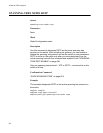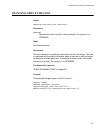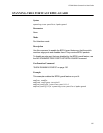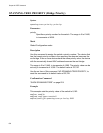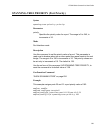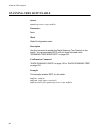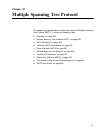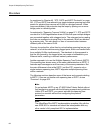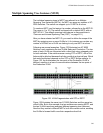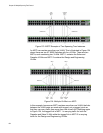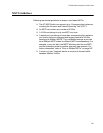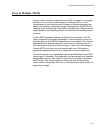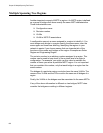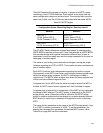
Chapter 45: Multiple Spanning Tree Protocol
642
Overview
As mentioned in Chapter 40, “STP, RSTP and MSTP Protocols” on page
561, STP and RSTP are referred to as single-instance spanning trees that
search for physical loops across all VLANs in a bridged network. When
loops are detected, the protocols stop the loops by placing one or more
bridge ports in a blocking state.
As explained in “Spanning Tree and VLANs” on page 571, STP and RSTP
can result in VLAN fragmentation where VLANs that span multiple bridges
are connected together with untagged ports. The untagged ports creating
the links can represent a physical loop in the network, which are blocked
by spanning tree. This can result in a loss of communication between
different parts of the same VLAN.
One way to resolve this, other than by not activating spanning tree on your
network, is to link the switches using tagged ports, which can handle traffic
from multiple VLANs simultaneously. The drawback to this approach is
that the link formed by the tagged ports can create a bottleneck to your
Ethernet traffic, resulting in reduced network performance.
Another approach is to use the Multiple Spanning Tree Protocol (MSTP).
This spanning tree shares many of the same characteristics as RSTP. It
features rapid convergence and has many of the same parameters. But
the main difference is that while RSTP, just like STP, supports only a
single-instance spanning tree, MSTP supports multiple spanning trees
within a network.
The following sections describe some of the terms and concepts relating
to MSTP. If you are not familiar with spanning tree or RSTP, review
“Overview” on page 562.
Note
Do not activate MSTP on an AT-9000 Allied Telesis Switch without
first familiarizing yourself with the following concepts and guidelines.
Unlike STP and RSTP, you cannot activate this spanning tree
protocol on a switch without first configuring the protocol
parameters.
Note
The AlliedWare Plus MSTP implementation complies fully with the
new IEEE 802.1s standard and should be interoperable with any
other vendor’s fully compliant 802.1s implementation.



